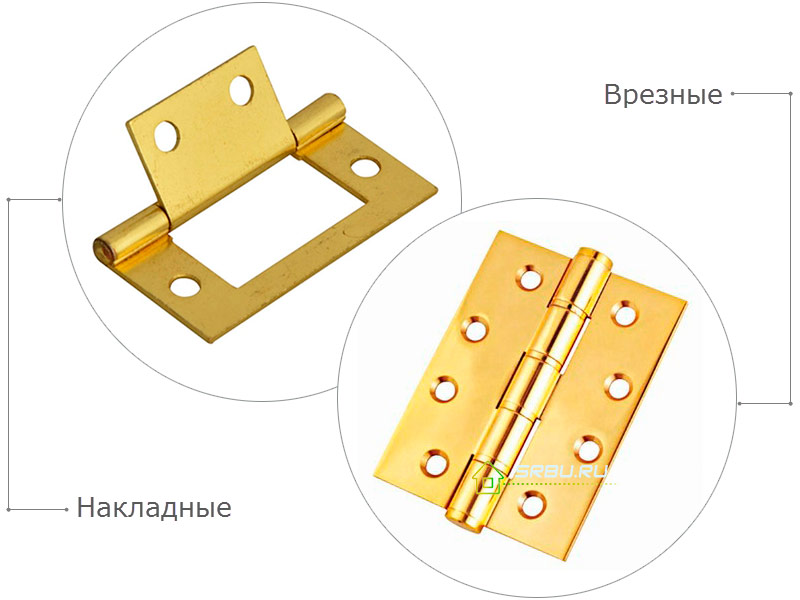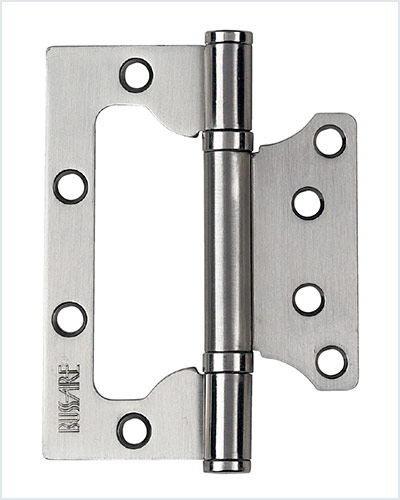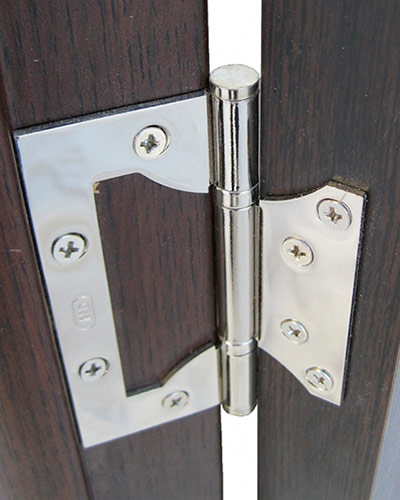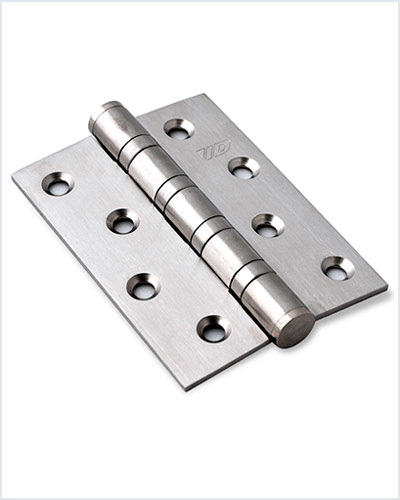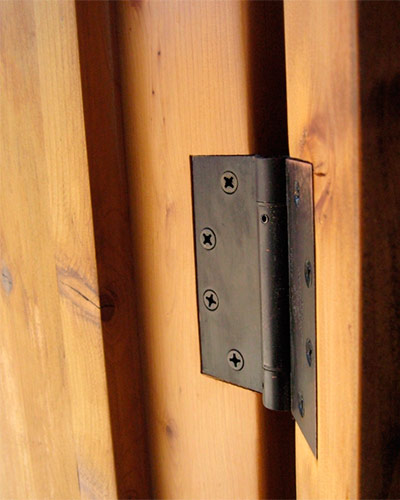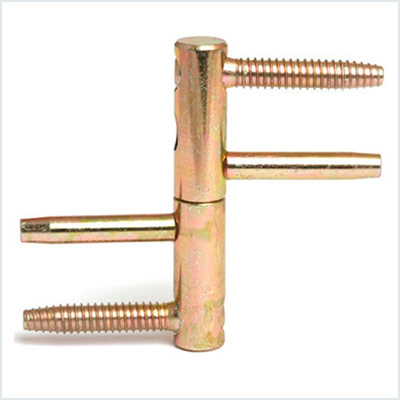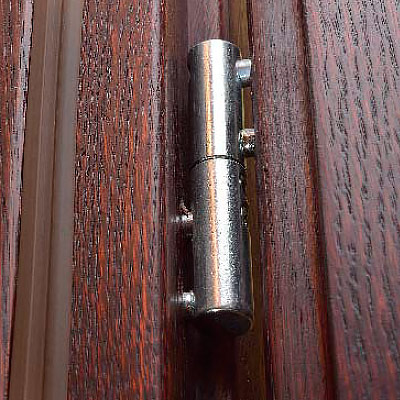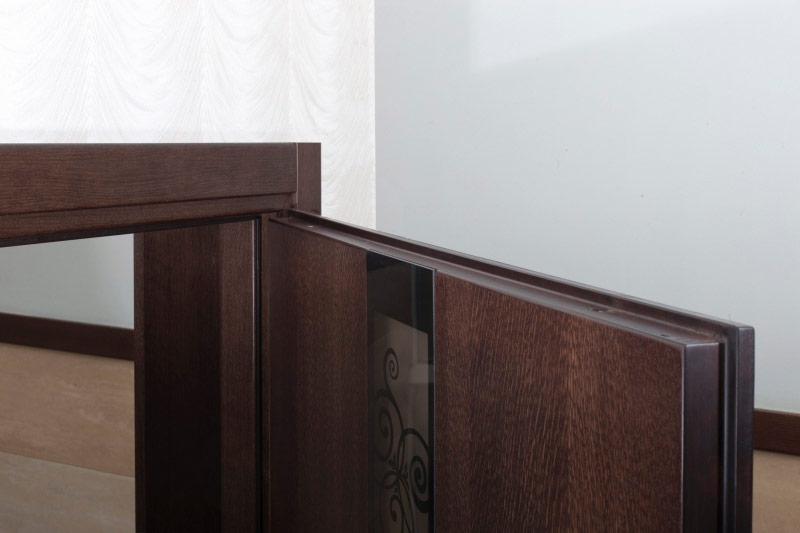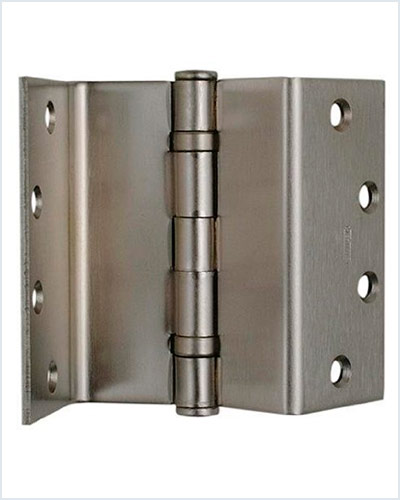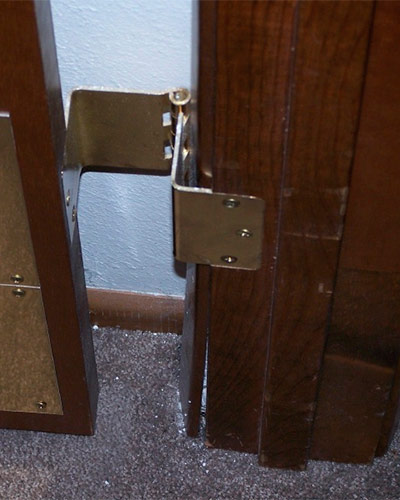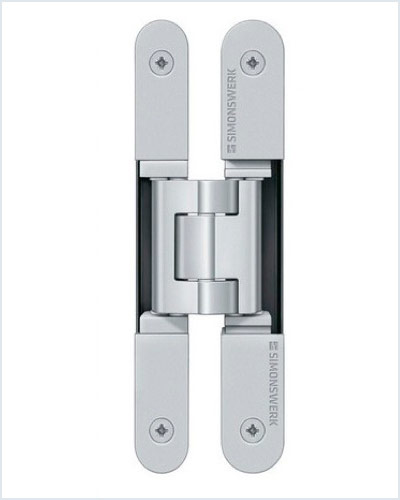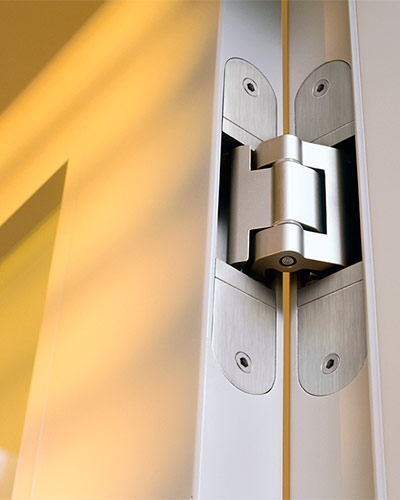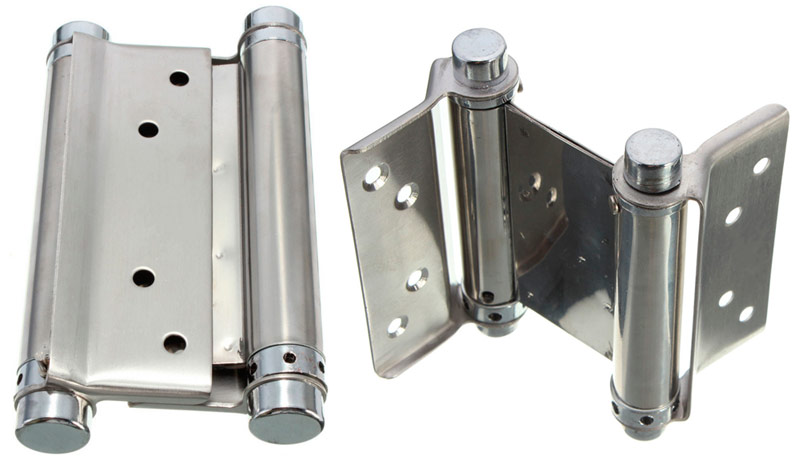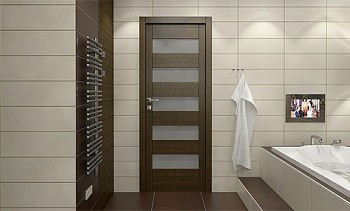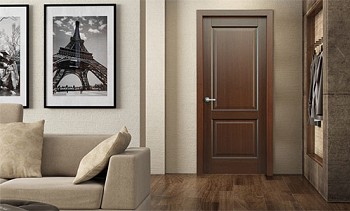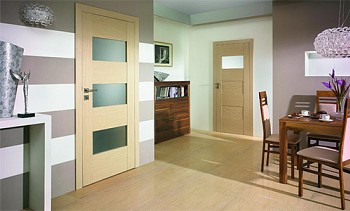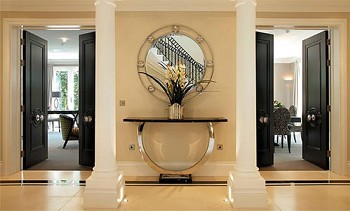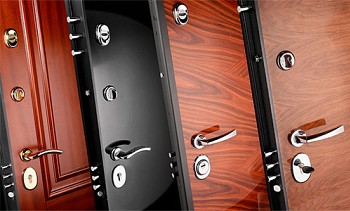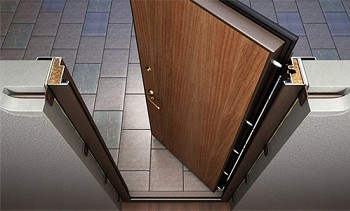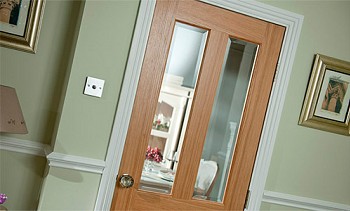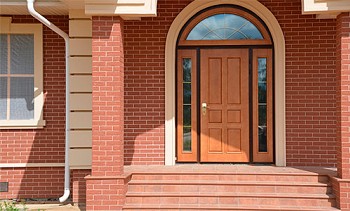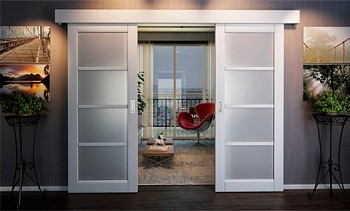Entrance and interior doors are inherent not only protective, but also decorative functions. The door design is selected in accordance with the interior of the home, the door components should not be dissonant with the artistic style of the premises. Great importance is attached to the choice of types of door hinges, since an unsuccessful selection of canopies can spoil the appearance of the entire doorway, provoke a skew or subsidence of the door leaf, cause a lot of inconvenience due to loose closure of the casements in the box or an annoying creak in the hinges.
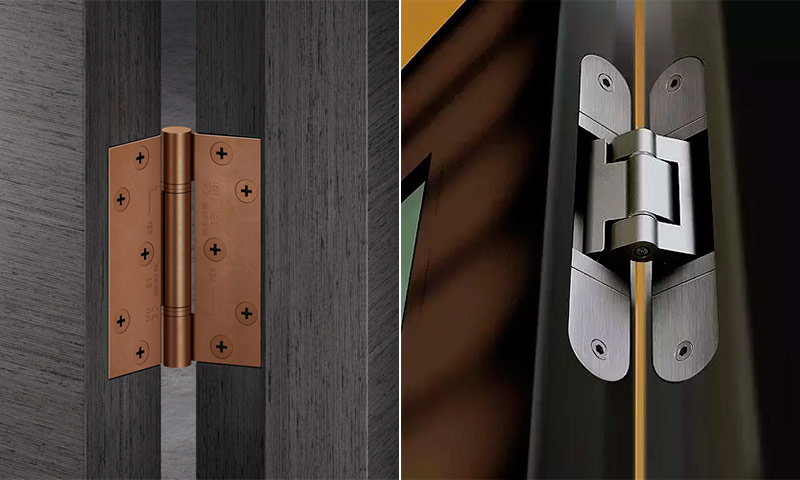
Content:
Hinge classification
Modern hinges for doors, the types of which are widely represented in the construction market, are classified according to several key features:
- Place of installation;
- Mechanism plug;
- Way of fastening to a box;
- Manufacturing material;
- Type of construction.
It should be clarified that the need for an independent choice of canopies for doors affects the entrance and interior doors made of wood or MDF. Doors made of other materials (steel, aluminum and plastic) are delivered already equipped with appropriate fittings and hinges. Only for wooden door leaves there is a need and the possibility of self-assembly and installation of hinges at your own discretion. Therefore, the classifying signs of door hinges will be considered in the projection on their use in the composition of wooden doors.
Hinges depending on the installation location
Depending on the installation location, the loops are divided into two types:
- Hinges for entrance doors;
- Hinges for interior doors.
Entrance doors are more durable and massive compared to interior doors, respectively, and canopies for entrance models differ from their analogues for interior use, in larger sizes. The main structural difference of the hinge hardware for entrance doors is the equipment of the hinges with a special anti-sash mechanism, which prevents unauthorized door lifting.
For this, projections and depressions are made on the hinges of the hinges, which are aligned when the door is closed, preventing the vertical movement of the wing when lifting.
Detachable and universal hinges
Split loop
The detachable hinge allows you to remove the sash without unscrewing the hinge itself. Removable hinges in everyday life are also called canopies.
The figure shows a detachable loop diagram illustrating the principle of detachability. The elements of fixation of both parts of the loop in everyday life were wittyly called “father” and “mother”. This terminology has been readily recognized by both users and manufacturers in many countries.
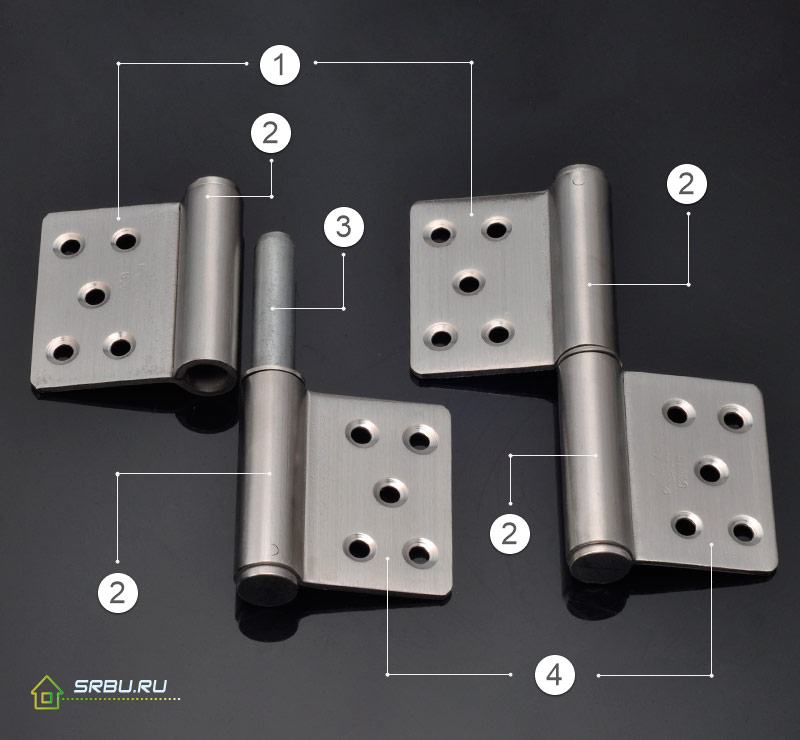
1. Door wing hinge (mother); 2. Fist; 3. Reinforced steel finger; 4. The frame wing (dad).
Universal loop
The universal (or one-piece) hinge must first be unscrewed, only then will it be possible to remove the door from the box. Universal hinges are suitable for any doors that open both inward and outward. But to this big plus is added the same big minus - if necessary, the door will be removed only after unscrewing all the hinges from it.
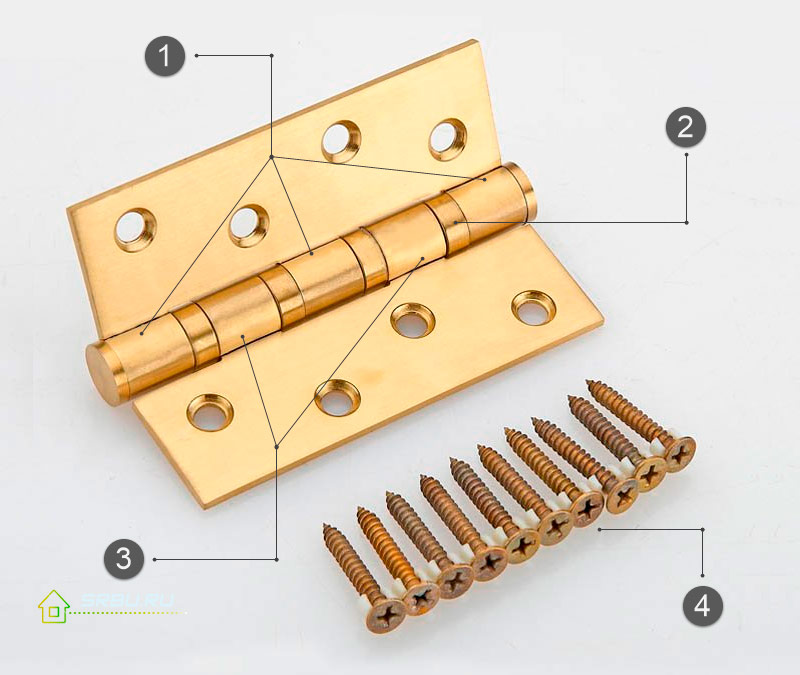
1. The frame wing has three hinges; 2. The sleeve; 3. The door wing has two hinges; 4. Self-tapping screws for fastening.
Types of loops by type of construction
According to the type of design, the following types of door hinges are distinguished:
- waybills;
- mortise;
- angular;
- screw-in;
- hidden;
- bilateral.
Let's consider in more detail each design.
Overhead and mortise door hinges
Figuratively speaking, GOST 5088-2005 does not distinguish between overhead and mortise loops. As can be seen from the figure below, the main details of the overhead and mortise loops are the same:
Both modifications are card hinges that are screwed to the door leaf and frame. The difference is only in the method of preliminary preparation of the surfaces of the door and the opening:
- for overhead models, preparation is not required;
- for mortise models, it is necessary to cut a recess in the end of the door and in the box in order to drown the card plate in it.
Overhead loops have been known since ancient times, their manufacture was entrusted only to skillful blacksmiths who could forge a beautiful and durable product from a steel strip. That symmetry, which in our time is imposed on the mass consumer by the conditions of modern conveyor technologies, manual work did not allow. The loops were forged very large, they were given a diverse form.
The process of transforming design concepts in the direction of retro style also affected the door hinges. In the antique-styled interiors of country houses and city apartments, there is a place for forging modern blacksmiths or products that resemble loops of old buildings in shape.
The owners of doors with overhead hinges are impressed by the simplicity of installation work when installing them, when the hinges are screwed in and the door is easily set to its design position using primitive improvised means.
An interesting design solution for the already traditional flat map of the patch loop is the patch loop, commonly called the “butterfly loop”. Such a loop can fold up to the thickness of one card due to a notch of intricate shape resembling a butterfly wing. As a result, there is no need to make a selection for this model of canopies either on the sash or in the opening on the box.
Mortise models of canopies are identical in design with overheads, however, for their installation, the hinges are cut into the end of the mounted door and screwed. With the door closed, only the parts of the plates covering the pivot axis are visible.
In addition to the separation of overhead and mortise loops into loops without insert and with insert, they are also divided into two types:

Detachable

Universal
In accordance with established practice, removable mortise hinges are called mortise canopies, and universal - mortise hinges.
The main difference between overhead detachable hinges from universal hinges is the rigidity of the universal hinge design, which allows it to withstand a large weight load with a smaller size. When using universal loops, the likelihood of unauthorized sagging in the opening is less.
Another fundamental difference for these two modifications of patch loops is the separation of split canopies on the right and left-hand mechanisms. For universal loops, there is no such separation. They are installed without worrying about the direction of opening the sash.
Screw (or screw in) door hinges
The screw construction of the door hinges is represented by two symmetrically arranged parts of a cylindrical shape with holes for fixing screws. The so-called "barrels" are functional analogues of flat cards. One "barrel", that is, a cylindrical wing with screws, is attached to the box, the other - on the door leaf.
Screw loop mechanisms are universal, no need to select the right or left loops. The door on screw hinges can no longer be removed, which can be considered both an advantage and a disadvantage.
It is important! Screw canopies are applicable only on doors with European doors (the so-called quarter doors). The standard door leaf of our standards for such hinges cannot be fixed.
Corner door hinges (corner card awnings)
The external difference of the corner loop from the invoice or mortise is the fastening to the axial shaft of not two flat wing plates, but two profile corners. The angular shape of the cards allows them to be mounted on the porch doors. Fastening to the end of the door is carried out in a mortise way on the screws. Hinges are conveniently placed in the opening, but they are noticeable against the background of the entire door structure.
Hidden (hidden) door hinges
Hidden hinges occupy a special place due to the aesthetic appearance of the doorway (when the door is closed, hidden hinges are completely invisible) and the impressive design. They are universal, you do not have to rack your brains over which loops are right and which are left. In the sector of elite interior structures, they are given an honorable place.
The design of hidden (hidden) hinges involves the presence of at least three rotary axes. The installation of hidden loops is a complex technological process, for the implementation of which it is more expedient to attract specialists.
Double-sided door hinges
Double-sided hinges belong to the category of card awnings. Their main purpose is to provide unobstructed openings / closures of sashes in both directions - either outward or inward. In ordinary apartments they are installed extremely rarely, their application there is simply not logical.
The difference between the hinges in the material of manufacture and coating
Materials for manufacturing door hinges do not differ in a wide variety.
Steel products return to their former relevance. Centuries ago, blacksmiths were sophisticated in the manufacture of forged steel overhead hinges, but the development of the production of aluminum and brass alloys has overshadowed the use of steel for art door hinges. In the Soviet era, steel was used to make ordinary consumer goods of a dull appearance without any decorative or anti-corrosion coating.
Now the installation of such canopies on interior doors is not practiced, they are more used on street fences or in non-residential premises. For installation in apartments, the modern door furniture market offers forged antique hinges or stainless steel awnings. The main advantage of steel products is high rates of mechanical strength and non-abrasion. Hinges made of stainless steel are resistant to the negative effects of moisture and temperature extremes, so they are willingly used for entrance doors.
Thanks to the efforts of interior designers, canopies covered with enamels or special compounds “under gold”, “under bronze”, chrome-plated or coated with brass became widespread. Their basis is alloys of aluminum, copper, zinc or steel, which are then coated with anticorrosive and decorative purposes.
The world's leading door furniture brands instead of brass hinges make them entirely from brass. Such products are easily polished and retain their decorative qualities for a long time. In terms of wear resistance, brass products are not inferior to steel counterparts.
It is impossible not to mention the materials of counterfeit products that flooded the market for door hardware. Loops that look like popular brands, but have nothing to do with them, are made from materials obtained by powder and other technologies. Counterfeit hinges can unpredictably collapse at any most inopportune moment, creating a direct threat of injury to others when the sash suddenly sags.

